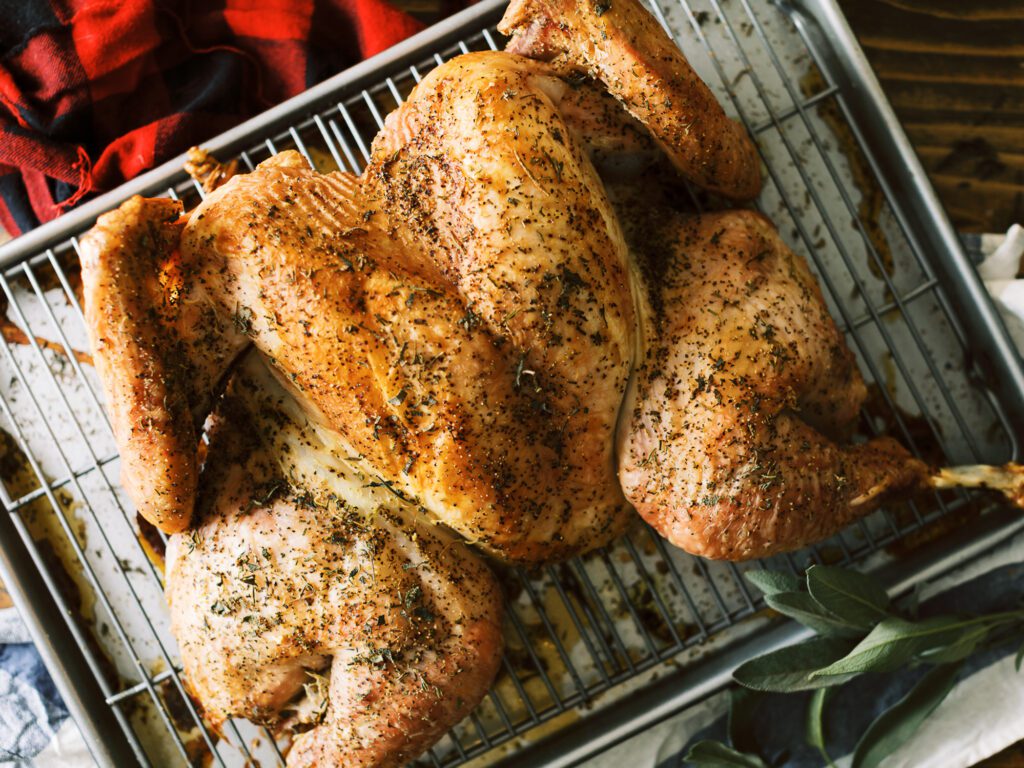Roasting is a popular method of cooking beef, chicken, lamb, and pork. Understanding the temperatures and cooking times required for each cut of meat is essential. The ideal temperature for roasting depends on the type of meat you are cooking. It is essential to cook the meat to the right internal temperature as the meat’s internal temperature determines its doneness. The cooking time for each roast depends on its size and the desired doneness. Here are some tips and tricks to help you achieve a perfect roast – Preheat the oven, insert the meat thermometer at different places, let the meat rest, cook the meat on a rack, cover the meat with foil, and baste the roast with the meat juices and butter at intervals.
The Science of Roasting: Understanding Temperatures and Cooking Times for Your Roasts
Roasting is a common method of cooking meats that entails exposing them to dry heat in an oven or over a fire. It is a popular cooking method for a variety of meats, including beef, chicken, lamb, and pork. Roasting can produce tender and succulent meat that is full of flavor. It is ideal for large cuts of meat, such as whole chickens, turkey, or beef roasts.
However, roasting can be tricky, especially if you are new to the process. The Science of Roasting involves understanding the temperatures and cooking times required for each cut of meat. Here are some tips and tricks to help you roast meat successfully.
The Role of Temperature in Roasting
Temperature is an essential factor in roasting. The ideal temperature for roasting depends on the type of meat you are cooking. Generally, the temperature for roasting beef and lamb is between 325°F and 450°F, while chicken and turkey are roasted at a temperature of 350°F.
Internal Temperature
It is essential to cook the meat to the right internal temperature. This is because the meat’s internal temperature determines its doneness. To measure this temperature, you need a meat thermometer, and you should insert it into the thickest part of the meat. Here are some general guidelines for the internal temperature of meats:
– Beef Roast: The internal temperature of a medium-rare roast should be 135°F, while a medium roast should be 145°F. Anything above 160°F for a beef roast will result in a dry and tough meat.
– Chicken: The internal temperature of cooked chicken should be 165°F, and the safest way to check is by taking the thermometer below the thigh bone.
– Pork Roast: Cook pork until the internal temperature reaches 145°F, but ground pork should reach 160°F to be safe to eat.
Cooking Times
The cooking time for each roast depends on its size and the desired doneness. The smaller the piece of meat, the less time it will take to cook. Here are some rough estimates of cooking times for various roasts:
Beef Roasts Cooking Time
– Medium-Rare Beef Roast (3 pounds) – 1½ – 2 hours
– Medium-Rare Beef Roast (4-6 pounds) – 2-2¼ hours
– Well-Done Beef Roast (3 pounds) – 2-2¼ hours
– Well-Done Beef Roast (4-6 pounds) – 2½ – 3 hours
Chicken Cooking Time
– Whole Chicken(3-4 pounds) – 1 to 2 hours
– Chicken Breast (Boneless) – 20-30 minutes
– Chicken Thigh – 35-40 minutes
Pork Roasts Cooking Time
– Pork Loin Roast (3-5 pounds) – 2-2¼ hours
– Pork Tenderloin – 25-30 minutes
– Pork Shoulder Roast – 5-6 hours
It is essential to remember that these are just rough estimates, and there may be variations depending on the oven temperature and the meat’s initial temperature.
Tips and Tricks for Beginners
Here are some tips and tricks to help you achieve a perfect roast:
– Always preheat the oven before putting the meat inside.
– Insert the meat thermometer at different places and angles to verify that the internal temperature is consistent.
– Let the meat rest for 10-15 minutes before carving after it’s done. This allows the juices to settle and avoid drying.
– Cook the meat on a rack to ensure even air circulation during the roasting process.
– Cover the meat with foil for the first 30 minutes and remove it to avoid over-browning your meat.
– Baste the roast with the meat juices and butter at intervals to infuse flavor and to prevent the meat from getting dry.
In conclusion, roasting is an outstanding cooking method for producing tender, juicy, and flavorful meats. The science of roasting revolves around understanding the right cooking temperatures, cooking times, and internal temperatures for each type of meat. Remember to use the tips and tricks outlined above, and with practice, you will become an expert in the art of roasting.
